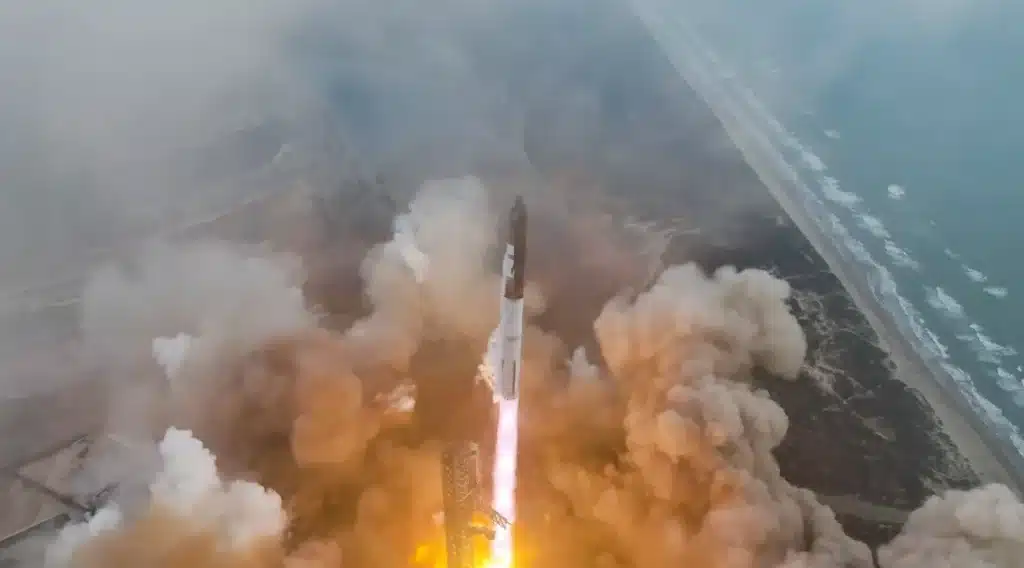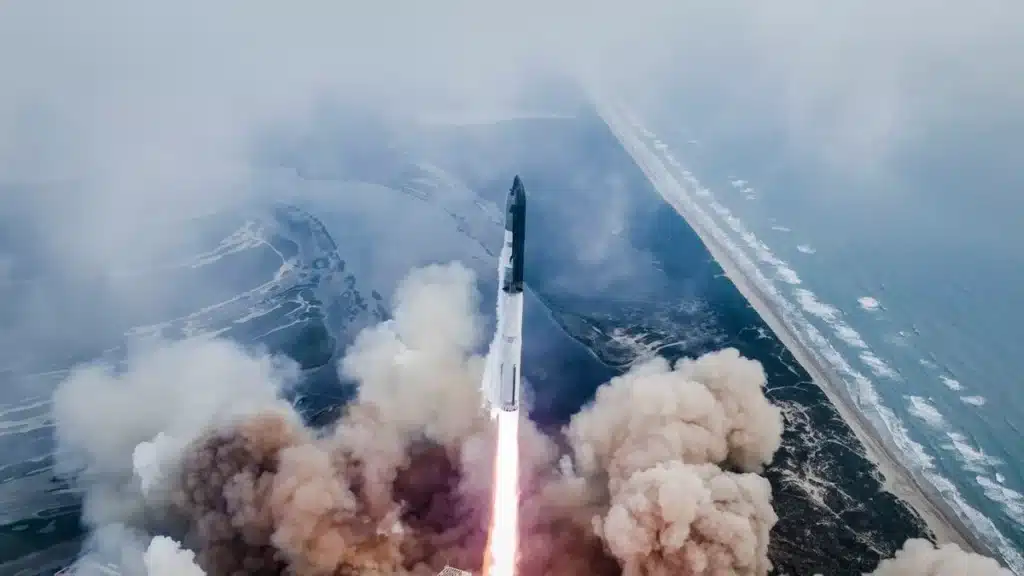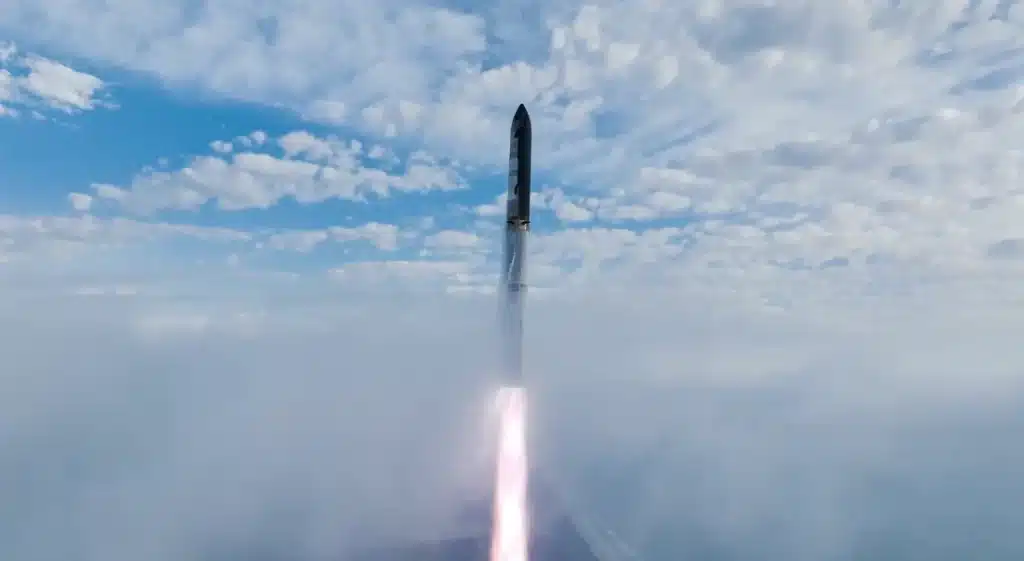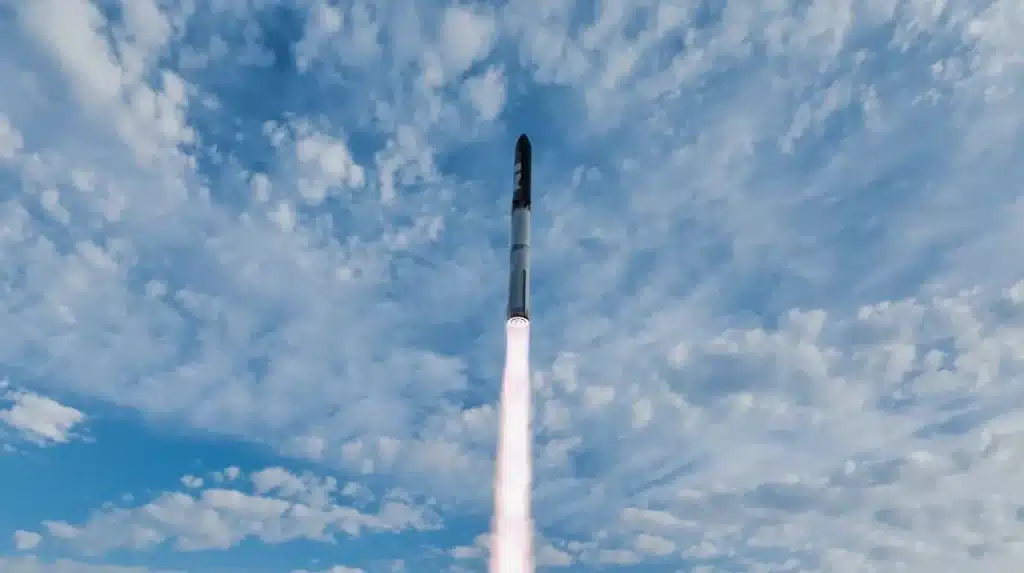Shockwaves from SpaceX’s giant Starship rocket incredibly caught on camera
- Shockwaves rippling from giant SpaceX Starship rocket captured on camera
- It’s the craft’s third test launch
- The slow-motion footage makes it clear just how powerful the engines of Starship are
Published on Mar 26, 2024 at 6:50 PM (UTC+4)
by Amelia Jean Hershman-Jones
Last updated on Mar 27, 2024 at 12:53 PM (UTC+4)
Edited by
Tom Wood
The shockwaves rippling from the giant SpaceX Starship rocket’s third test flight launch have been captured on camera.
The slow-motion footage makes it clear just how powerful the engines of Starship are.
Starship is the world’s largest and most powerful rocket, and it definitely shows in this video.
READ MORE! Video revealing the sheer size of Starship leaves viewers astonished
The rocket successfully departed from the SpaceX South Texas launch site in Boca Chica, Texas in the US on March 14.
In the video showing the rocket leaving the earth, shockwaves and clouds of smoke can be seen billowing from the two-stage spacecraft.
The reusable Starship cruise spacecraft sits atop its Super Heavy rocket booster as it leaves the ground.
The Super Heavy rocket booster is powered by 33 first-stage Raptor engines, which ignite in a fiery blaze.
Traveling upwards faster than the speed of sound, the 122-meter (400-foot) rocket sent shockwaves through the air.
This wasn’t the only angle that the mission was filmed from, as Elon Musk shared the ‘hottest video ever captured’ of Earth showing the Starship plasma field.
Designated Integrated Flight Test-3 (IFT-3), is the third test mission for the giant Starship.
Despite the spacecraft hitting several mission goals, such as reaching orbital speed for the first time, sadly neither the Starship vehicle nor its Super Heavy booster made it to splashdown.
The booster successfully separated from the rocket’s 50 m (165 ft) upper-stage about 2 minutes 45 seconds after liftoff.


However, Super Heavy’s engines did not relight as planned over the Gulf of Mexico for its landing burn.
This ultimately led to the loss of the booster.
Starship’s upper stage entered a suborbital coast phase above Earth post-separation.
This allowed the first test of the spacecraft’s ability to open and close its payload door in orbit.
It also enabled the transfer of super-cooled rocket propellant between tanks during spaceflight.
It was during re-entry that SpaceX communications with Starship ceased.

In spite of both vessels being lost, the test flight exceeded the first two attempts.
Both experienced explosions just minutes after launch.
Not ideal, really.
This isn’t the only SpaceX test flight caught on camera: a SpaceX droneship captured an exquisite view of a previous Falcon 9 launch and landing.

Elon Musk has high hopes for the craft, as he recently predicted that Starship would fly beyond our solar system.
The SpaceX supremo is currently putting that plan into action as – according to SpaceX – Starship will see six more test flights in 2024.
The next is scheduled for May, however, regulatory approval is still pending following an investigation into IFT-3.
DISCOVER SBX CARS: The global premium car auction platform powered by Supercar Blondie
All Supercar Blondie contributors undergo editorial review and fact-checking to ensure accuracy and authority in automotive journalism. After gaining her BA Hons in French and English at the University of Nottingham, Amelia embarked on a vocational diploma from the National Council for the Training of Journalists (NCTJ). This led to numerous opportunities, from interning at Vogue to being on the small team that launched Women’s Health magazine in the UK, which was named the PPA Consumer magazine of the year for three years running. As Health, Beauty and Fitness editor, Amelia personally received a Johnson & Johnson Award and was shortlisted for both PPA and BSME titles. Since then, Amelia has created content for numerous titles and brands, including the Telegraph, 111 Skin, Waitrose, Red magazine, Stylist, and Elle, as well as being Head of Content at Vitality and Editor in Chief at INLondon magazine. “My superpower is translating technical jargon about the mechanical workings of a supercar into a relatable story you’ll want to share with your friends after you’ve read it.” After joining the SB Media family as a senior journalist in September of 2023, Amelia’s role has evolved to see her heading up the SEO output of the editorial team. From researching the most ‘Google-able’ key terms to producing evergreen content - it’s been a time of hard work, growth, and success for the editorial team and the Supercar Blondie website. “I like to think of myself as a ‘method journalist’. In other words: I live and breathe whatever I am writing about. When writing about fitness, I trained as a personal trainer, and as a beauty editor, I completed an ‘expert’ in scent diploma with the Fragrance Foundation. “During my tenure at Supercar Blondie, however, I did something I never thought possible: I passed my driving test at the age of 36. One day I’d love to train as a mechanic to better understand what happens under the hood, too. “My sweet spot is providing readers with a ‘takeaway’ (read: something new they didn’t know before) after reading every one of my stories. While I don’t claim to be an expert in the automotive world, I know the experts and bodies in the field to rely on to provide our readers with an informative and thought-provoking story every time they visit the site.”




